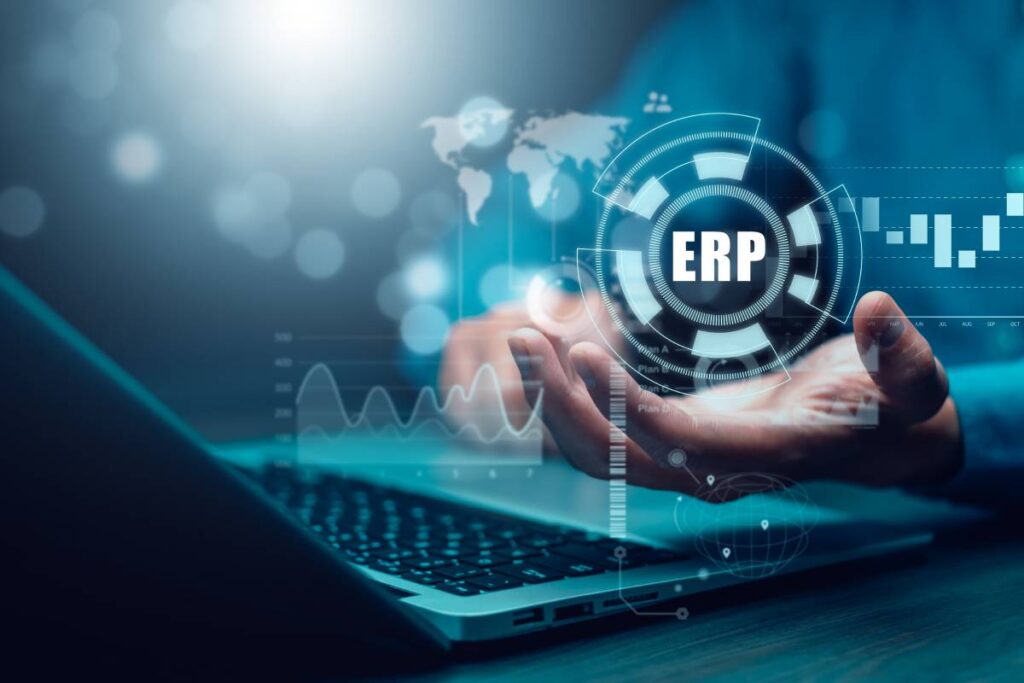
Understanding ERP and EPM
In today’s business world, managing resources and performance effectively is key to long-term success. Many organizations rely on Enterprise Resource Planning (ERP) and Enterprise Performance Management (EPM) systems to streamline their operations. But what is the difference between EPM and ERP? And how do you determine which one best fits your needs?
While ERP focuses on managing daily business processes, EPM is designed to analyze and improve business performance through strategic planning and financial insights. Both systems are crucial, but they serve different functions within an organization.
This blog will break down the differences between ERP and EPM, explore their key features, and help you decide whether ERP or EPM is the right choice for your business.
What is ERP?
Enterprise Resource Planning (ERP) is a software solution that integrates core business processes such as finance, supply chain management, human resources, and inventory management into a unified system. ERP systems provide real-time data to enhance operational efficiency and streamline decision-making across departments.
Key Features of ERP:
- Resource Planning: Manages company-wide resources, including materials, finances, and workforce.
- Supply Chain Management: Tracks inventory, procurement, and logistics for better stock control.
- Customer Relationship Management (CRM): Enhances customer relationships by centralizing customer data.
- Financial Management: Supports finance teams with tools for accounting, financial close, and compliance.
- HR and Payroll: Manages employee records, payroll processing, and recruitment workflows.
ERP systems provide businesses with a centralized view of their operations, ensuring improved performance and long-term growth.
What is EPM?
Enterprise Performance Management (EPM) focuses on business performance by helping companies plan, budget, forecast, and analyze financial results. EPM solutions support executive decision-making through advanced analytics and scenario modeling.
Key Features of EPM:
- Strategic Planning: Helps set long-term goals based on data-driven insights.
- Financial Management: Enhances budgeting, forecasting, and reporting for finance teams.
- Scenario Modeling: Tests different business scenarios to improve strategic decisions.
- Data-Driven Insights: Uses advanced analytics to identify trends and opportunities.
- EPM Processes: Streamlines financial consolidation, regulatory compliance, and risk management.
EPM solutions empower businesses to implement strategic planning and optimize performance, making them essential for financial teams and C-level executives.
What is the Difference Between ERP and EPM?
While both ERP and EPM systems support business processes, their primary focus differs:
| Feature | ERP (Enterprise Resource Planning) | EPM (Enterprise Performance Management) |
| Primary Function | Manages day-to-day business operations | Enhances decision-making and financial planning |
| Focus Area | Operations, HR, supply chain, and finance | Budgeting, forecasting, and business performance |
| Users | Operations teams, HR, and finance | Finance teams, executives, and planners |
| Key Benefits | Improves efficiency and automation | Provides data-driven insights for strategic growth |
| Core Technologies | CRM, HRMS, SCM, Accounting | Advanced analytics, reporting, modeling |
In essence, ERP systems run the business, while EPM systems analyze and optimize it. Many companies use both ERP and EPM for comprehensive business management.
Implementing EPM with ERP

To fully leverage enterprise performance management (EPM), businesses often integrate it with ERP systems. This integration allows real-time access to financial management, supply chain management, and other critical data points.
Benefits of Using ERP and EPM Together:
- Improved Performance: Combining resource planning ERP systems with EPM ensures strategic financial management.
- Data Consistency: EPM processes rely on real-time data from ERP systems for better forecasting and budgeting.
- Streamlined Business Operations: ERP handles day-to-day activities while EPM provides insights for strategic growth.
- Enhanced Decision-Making: Executives can make data-driven decisions based on accurate reporting from both systems.
- Financial Close Efficiency: Automates compliance and reporting, ensuring a smoother financial closing process.
Choosing the Right System: ERP or EPM?
The choice between ERP or EPM depends on your business needs:
- If you need to manage daily business operations, automate processes, and improve efficiency, an ERP system is the right choice.
- If you need to enhance financial planning, improve decision-making, and analyze business performance, an EPM system will be more beneficial.
- If your organization requires both operational efficiency and strategic financial insights, integrating ERP and EPM is ideal.
The Bottom Line
Both ERP and EPM solutions are powerful tools that help businesses optimize performance, streamline operations, and support long-term growth. Understanding the difference between ERP and EPM can guide you toward selecting the best solution for your specific needs.
For companies looking to scale and make data-driven decisions, implementing EPM alongside an ERP system can provide the best of both worlds—ensuring business processes run smoothly while enabling smarter financial planning.
Ready to Optimize Your Business?
If you’re considering an ERP implementation or looking to enhance your EPM processes, contact Cre8tive Technology & Design today to find the perfect software solution for your business!
